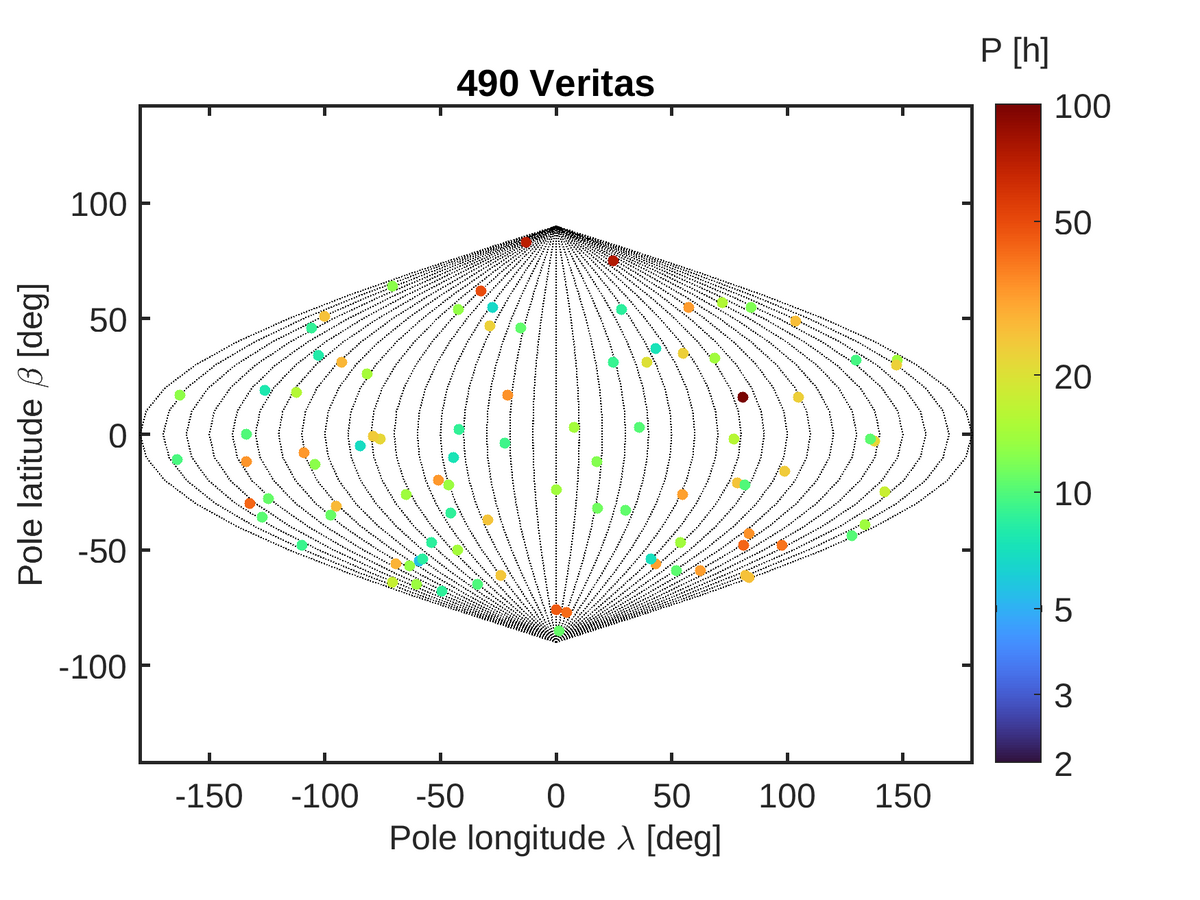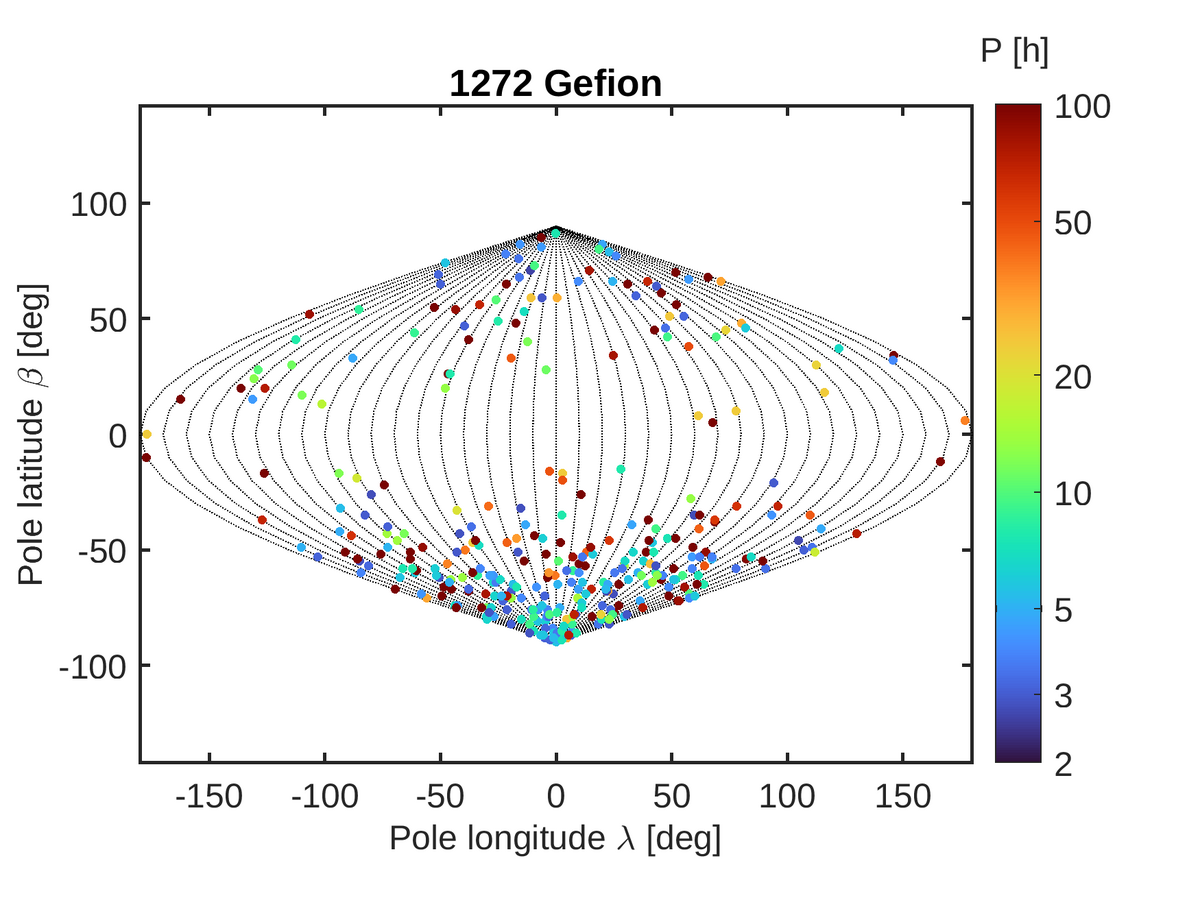Spin State Properties in Young Asteroid Families
- Charles University in Prague, Institute of Astronomy, Faculty of Mathematics and Physics, Prague, Czechia (hanus.home@gmail.com)
Abstract:
The Gaia data release 3 (DR3) in June 2022 provided precise photometric measurements for over 150,000 asteroids, allowing the derivation of rotation state properties for approximately 8,600 of them. We complemented DR3 data with measurements from the Asteroid Terrestrial-impact Last Alert System (ATLAS), which offers more frequent observations for over 100,000 asteroids, albeit with slightly lower accuracy. By employing a physical model encompassing rotation period, spin axis orientation, and 3D shape, we derived approximately 16,000 unique spin state and shape solutions. This dataset, derived from photometry from two consistent sources, mitigates biases present in previous multi-source datasets. Notably, our analysis revealed a higher proportion of slow rotators, often overlooked due to sampling bias. We investigate several specific collisional families in detail, finding evidence that older families display characteristics indicative of a more evolved population, influenced by YORP spin-down effects. Conversely, young families such as Veritas exhibit largely unevolved spin states due to thermal forces, reflecting the aftermath of the collisions that created them.
Introduction:
Understanding the physical properties of asteroids, including their spin state, shape, albedo, and size, is essential for unraveling their evolutionary history. Various observational techniques have been utilized to derive these properties, with lightcurve inversion methods playing a crucial role in reconstructing asteroid shapes and spin states. Recent advancements in data availability, such as the Gaia data release 3 (DR3) and the Asteroid Terrestrial-impact Last Alert System (ATLAS), offer new opportunities to investigate asteroid properties in greater detail. The YORP effect has emerged as a key factor shaping asteroid spin states within families, highlighting the importance of considering family age in such studies.
Methods:
We combine data from Gaia DR3 and ATLAS to derive physical properties for asteroids, including rotation period, spin axis orientation, and 3D shape. Gaia DR3 provides precise photometric measurements for over 150,000 asteroids, while ATLAS offers more frequent observations for over 100,000 asteroids. Utilizing a physical model, we derive unique spin state and shape solutions for approximately 16,000 asteroids.
Results:
Our analysis reveals a higher proportion of slow rotators in the dataset, challenging previous sampling biases. We investigate specific collisional families, finding evidence that older families exhibit characteristics indicative of a more evolved population, influenced by YORP spin-down effects. Conversely, young families display largely unevolved spin states, reflecting the aftermath of the collisions that created them.
Conclusions:
This study enhances our understanding of asteroid populations and their evolutionary processes. Insights derived from this analysis contribute to the dynamic modeling of the solar system and provide valuable constraints for future studies.


Figure 1: Spin states in two collisional families. The solutions are derived from the latest photometric datasets. The young Veritas family (8 Myr old, Carruba et al. 2017, MNRAS, 469, 4400) comprises asteroids with spin vectors distributed uniformly. In contrast, the old Gefion family (1 Gyr old, Aljbaae et al. 2019, A&A, 622, A39) exhibits a bimodal distribution of spin vectors. Additionally, the prevalence of numerous slow rotators (P > 20 hours) also confirms Gefion's evolved state.
How to cite: Hanus, J. and Durech, J.: Spin State Properties in Young Asteroid Families, Europlanet Science Congress 2024, Berlin, Germany, 8–13 Sep 2024, EPSC2024-616, https://doi.org/10.5194/epsc2024-616, 2024.